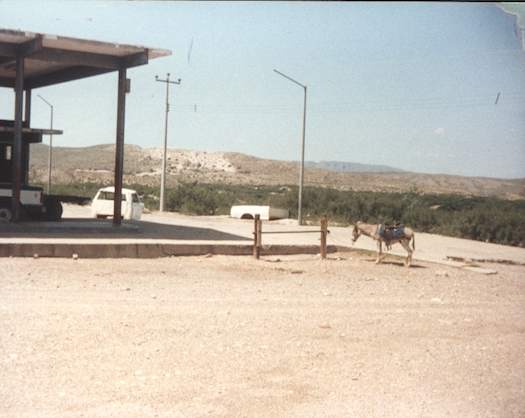[EDITOR’S NOTE: Google Maps changes its algorithms periodically. Times and distances were correct when published in 2012; they have changed in the meantime]
The Twelve Mile Circle continues to generate all sorts of interesting search engine queries, an endless stream of potential article topics. I remember back in the early days of the blog I had to come up with everything myself. That’s rarely an issue anymore. Case in point, someone wanted to know the shortest way to drive from Canada to Mexico.
I don’t know why someone would necessarily want or need this knowledge. One would have to cross through the United States any which way it’s sliced. This led me to conclude that perhaps my unknown visitor had an issue with the United States. He didn’t like it for some reason. Maybe he was a wanted criminal or an aging Vietnam War draft-dodger? Are the U.S. military authorities still looking for those guys? Never mind. Let’s just say they are for the sake of this exercise.

Maybe he’s a smuggler concealing something of particular value to people in Mexico but not to people in the United States? The query didn’t provide specifics so I’ll make them up. Let’s help our draft-dodging smuggler of Chinese counterfeit soccer balls make it through the United States as quickly as possible. He’ll have to obey speed limits to avoid police attention and he’ll have to use default routes generated by Google Maps as a proxy because he’s unfamiliar with the dangerous U.S. territory he will cover.
Calculations
At first I wanted to set up a matrix. I intended to calculate both the distance and time between every U.S. border crossing with Canada and Mexico. I abandoned that when I counted 117 Canadian and 47 Mexican possibilities (117 X 47 = 5,499 combinations, both for time and distance). As much as I enjoy and respect the 12MC audience, it’s not productive for me to calculate 10,998 different numbers simply to determine the absolutely minimal times and distances. I took some educated guesses instead. It’s possible that others may improve upon these marginally, and perhaps even meaningfully.
Douglas to Tijuana
Residents of Vancouver, British Columbia probably have it best. Traveling via the Douglas, BC crossing to the Tijuana (West) crossing in Baja California would take 22 hours and 43 minutes over a distance of 2,223 kilometres (1,381 miles). That’s less than a day! Also, now that we realize Google Maps overestimates travel times, one could probably shave another hour or two from that figure with continuous driving and make it to the safety of the Mexican border posthaste.
Paterson to Tijuana
I wondered if I could discover a shorter Pacific Coastal route. The original one swings out to the west albeit it takes complete advantage of an efficient and swiftly-moving Interstate 5. Would a shorter route, one more closely aligned with a line of longitude make a difference? Actually, no. I replicated the exercise starting from the Paterson, BC border crossing instead. Oddly, it was both longer and less timely. Examining the map (above) it seemed to unfold this way because of the wobbly nature of obscure roads selected for the trip. Notice several jogs east and west that increased the total distance (2,305 km / 1,432 mi) and time (25 hours).
Oungre to Ciudad Juárez
There was another route. It surprised me how closely it challenged the Pacific Coastal route, although it wouldn’t benefit many Canadians. Maybe residents of Regina, Saskatchewan could use it. Otherwise it’s fairly remote from population centers. This one ran from the Oungre, SK border crossing to Ciudad Juárez, Chihuahua, on the Bridge of the Americas crossing. Google maps predicts that the U.S. transit would cover 2,220 km (1,379 mi), over 23 hours 18 minutes. See what I mean? Three kilometers shorter although 45 minutes longer.
Windsor to Piedras Negras
Finally I attempted a diagonal route, taking advantage of the southern boundary dip following the contours of the Great Lakes. It’s a little longer (2,596 km / 1,402 mi) and couldn’t be done in a single day (27 hours). However, potentially, many more Canadians could take advantage of it due to its relative proximity to Toronto and Montréal. This one goes from Windsor, Ontario to Piedras Negras, Coahuila.
The worst option? It’s probably Campobello Island, NB to Tijuana (West). That’s 5,438 km (3,379 mi) over 55 hours (map).
Hopefully this will offer plenty of options for my Canadian draft-dodging soccer ball smuggler.

Leave a Reply